This past September 2016, the Game Design Department held their annual Master’s Showcase at the New York Film Academy Los Angeles campus. Students displayed games ranging from virtual reality, tabletop, side scrollers, card games, and PC games.
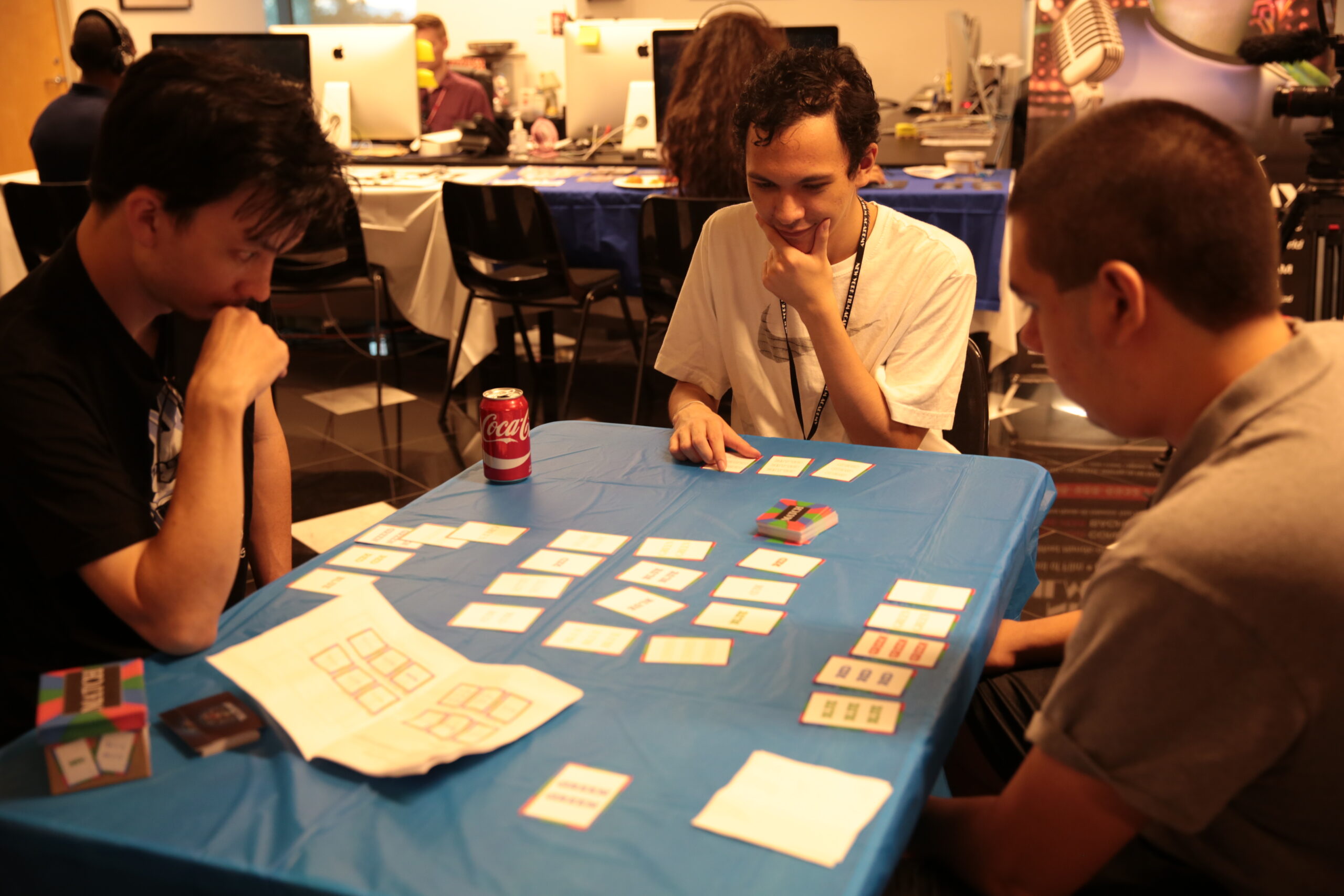
The event also played host to the second Twitch stream for NYFA. Previously, NYFA hosted a Twitch stream for the Pokémon Go Event in July. Students and professors play-tested new games so fans could see the gameplay.
I asked the team producing the Twitch TV stream, NYFA student Davin Tjen and Nicholas Cunha, about the response they were hoping for from their audience. “We’re very excited for it and we’re very excited to go live. We don’t know (what to expect). Our last stream was a hit, but that’s because it was Pokémon Go.”
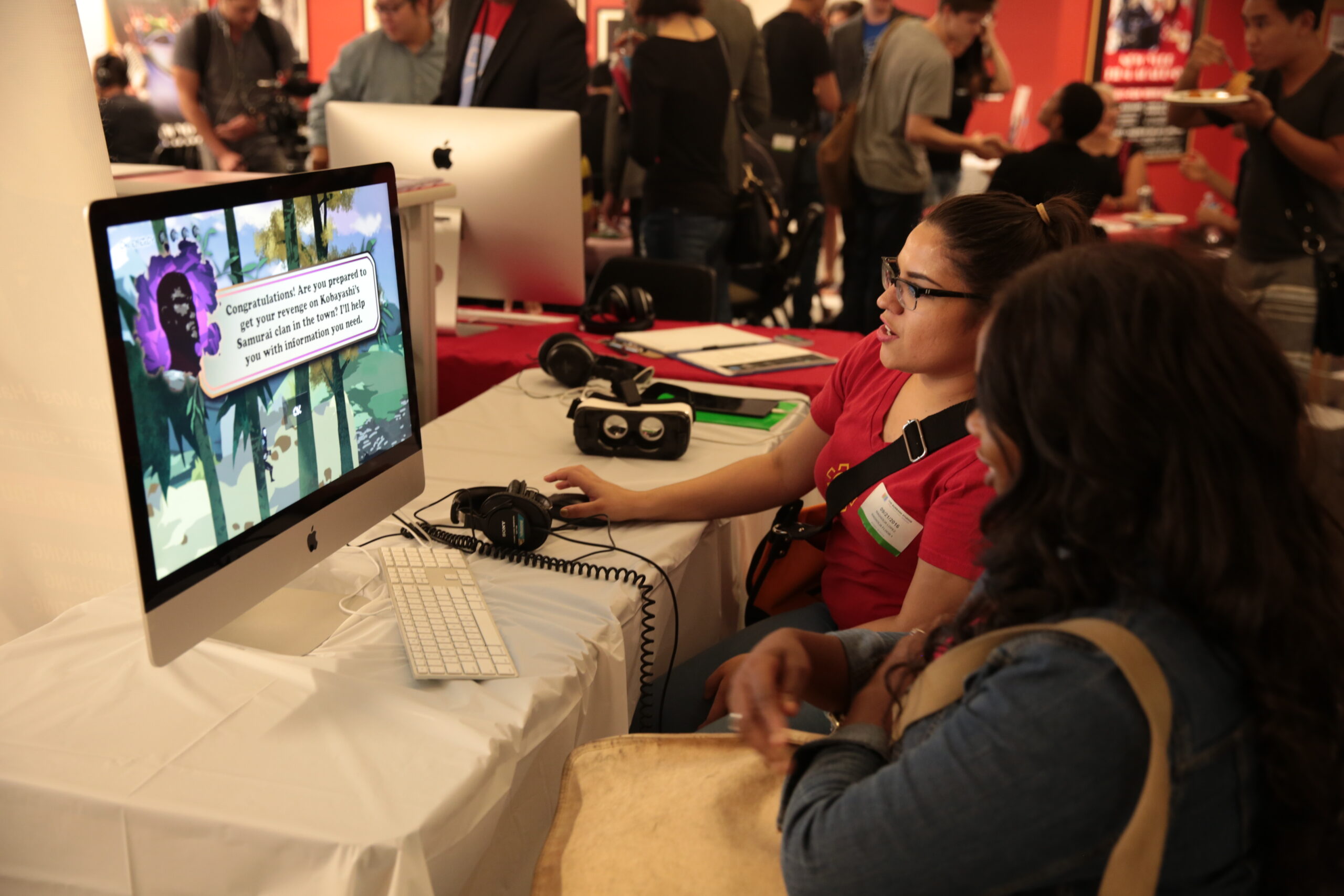
Guillermo Quesada Paez, Master of Fine Arts student, had several games at the event including Identity, Fetch Through Time, and Samurai V Skeletons.
Paez said, “Samurai V Skeletons is a tower defense game, but we also made it so you could control the main character. You can play as your tower but you can also play as a guy and help shoot the enemy. We basically mixed two different games together: tower defense and a top down shooter.”
The hardest part about making the game was creating path finding for the enemy. “We needed an algorithm to find the shortest paths between points,” Paez explained. “The player keeps moving around and the enemy has to keep recalculating their path to get to the player.”
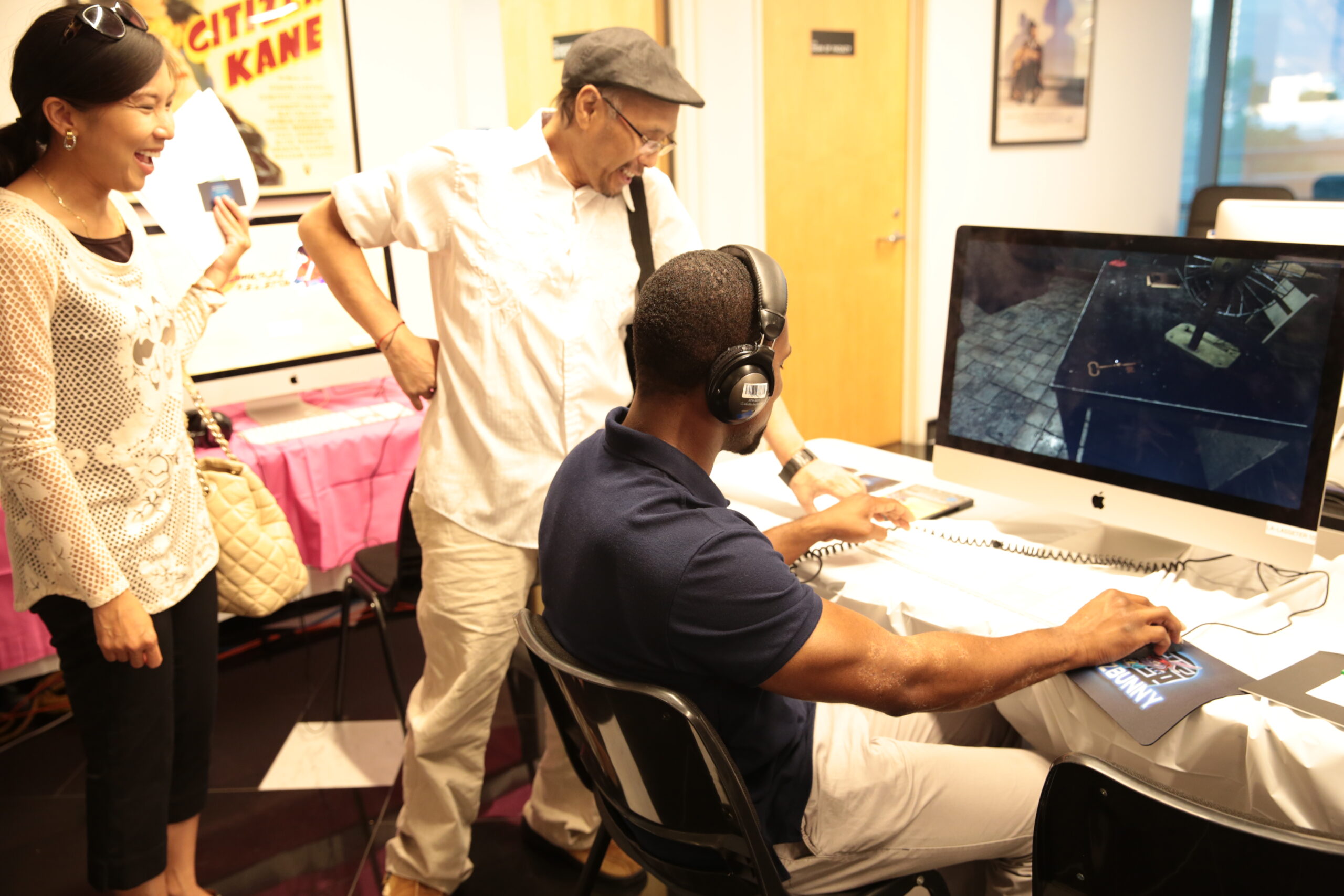
Drew Fletcher, Master of Fine Arts student and one of the developers on Fetch Through Time, told us about his game. “In Fetch Through Time, you’re a gelatin dog bouncing through the world trying to collect bones. You have to make sure you don’t run into anything otherwise you’ll pop.”
The inspiration behind the game was simple, “…we had two ideas. One teammate had an idea for a gelatin game and another teammate had an idea for an endless bouncing ball, so we combined the two.”
Board games were also on display. Associate of Fine Arts student Jeffery Lay told us about his game, inspired by the game Set. “I used something called the script effect. For example, here we have the word blue written in green. Your left side of the brain is trying to read the word and the right side of your brain is seeing the color. That brings a clash in your brain and it makes the game more challenging. If you do the script affect often it increases your logical brain. ”
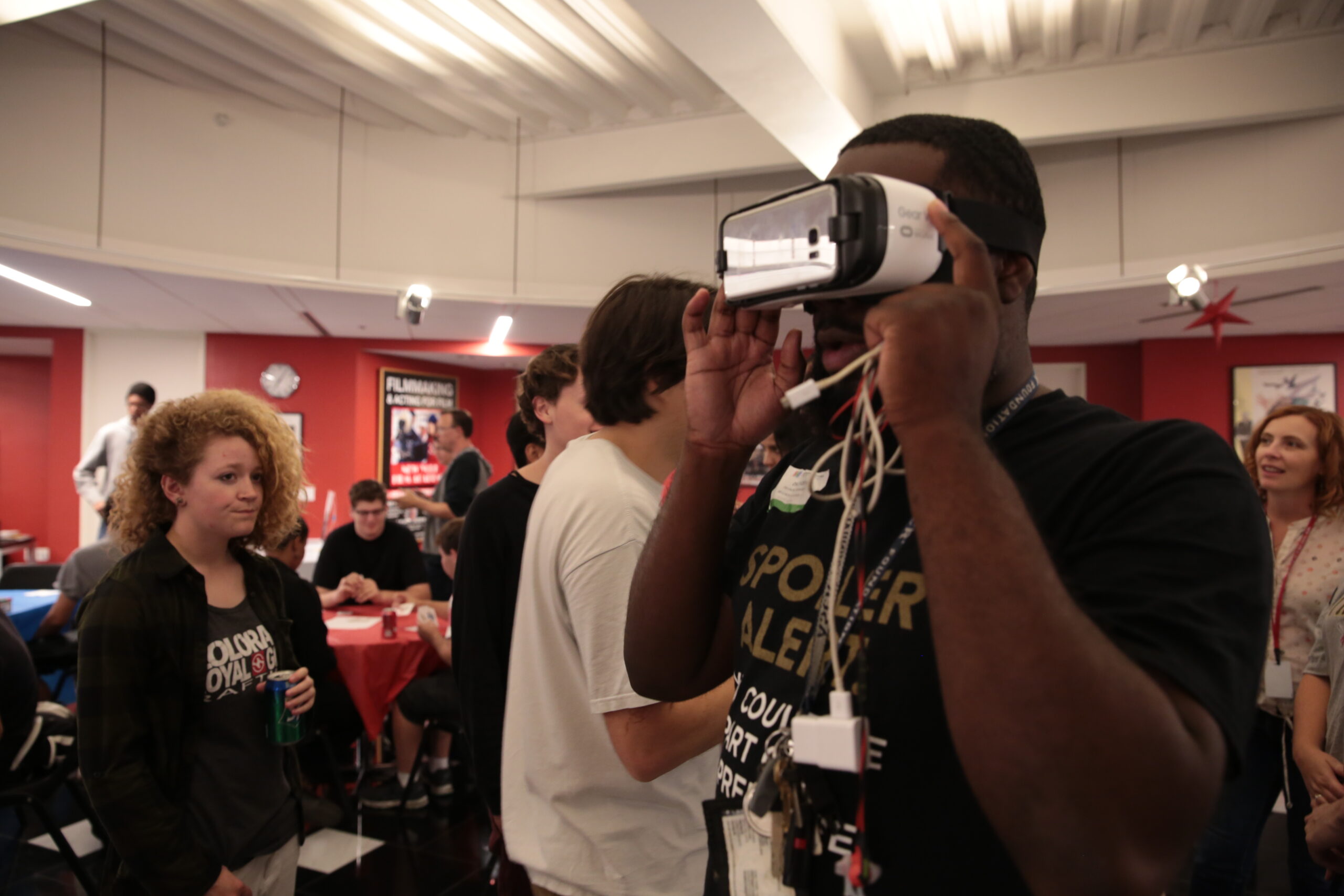
Lay also showcased his game Capture, a horror game without monsters. “My main focus was environmental designs. I don’t like horror games. Well … it’s not that I don’t like them. I’m scared of them. So, I thought it might be fun as a challenge to create one. I used environmental design to make it look realistic or give it that natural feeling and I wanted something that had a scary vibe without scaring the person directly. In some of the horror games something just pops up in your face. It’s not fair to the player. I try with music and sound to give players that scary feeling.”
New York Film Academy professor Scott Rogers (History of Video Games) had this to say about the event, “I’m really proud of all our students. They managed to do some pretty amazing things in a very short period of time. I’m always impressed with the work they do.”
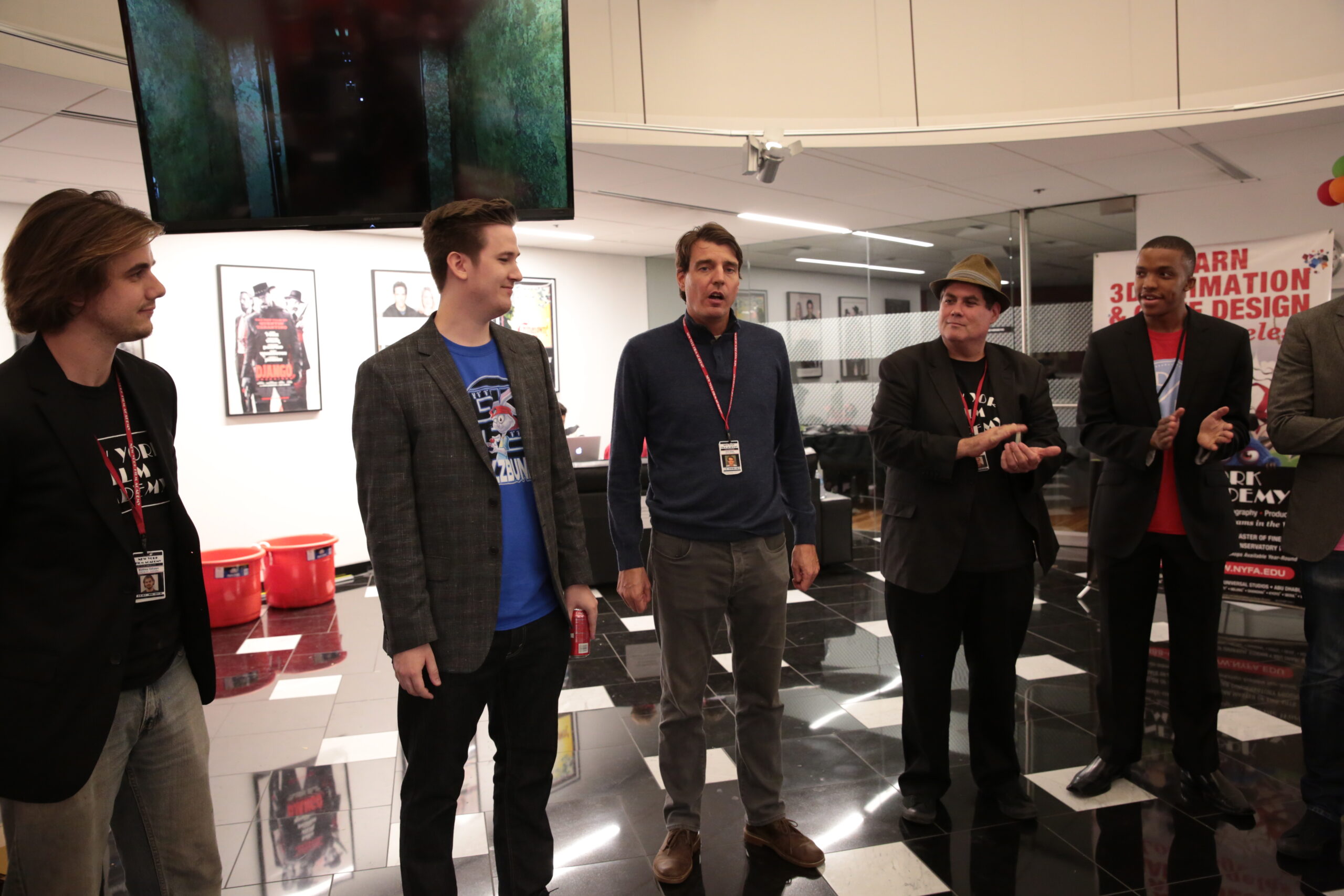
Rogers then explained how the students learn to develop their games. “One of the things that we like to teach the students here is that paper prototyping is the foundation of good organized game design, whether it’s making maps for their level designs or actually creating a playable version of their game in paper form. We’re trying to teach them to work not only well, but smart. So paper prototyping is this great tool that’s been around since Dungeons & Dragons.”
“The other side of this is you could just learn to make a board game. In fact, one of our students earlier tonight was talking to a fellow who’s a Creative Director at a board game company. The guy took the students card because he was so impressed with the game.”